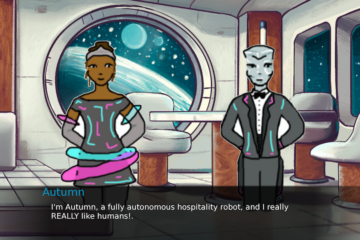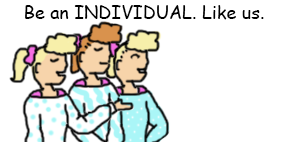A lot of books and blog posts I’ve read to understand plot and story structure talk about the Three Act Structure, and the thing is, the more I read … the more I’m convinced they don’t know what they mean.
I searched in vain for an honest definition of what an “act” even was, outside of having to change the sets on a stage. The second “act” in particular always feels arbitrary. Like “The First act ends here, the third act begins here, the second act is everything else.”
Even in books on MOVIE structure, I found senselessly arbitrary assignments of “acts” as the author tried to impose a structure on an existing thing. Frankly, many movies feel to me like they have two acts, the set up and the payoff. Aristotle’s Poetics only acknowledges two parts of a story – the complicating and the resolving. Yeah – the guy is cited as being the source of three act structure, but he only mentions it when talking about Tragedies performed on stage, and everyone nowadays seems to forget the choral pieces in between the acts when they cite him as the father of Three Act Structure.
I digress. Forget Aristotle. I have spent far too long trying to understand this “Three Act” concept because everyone insists it’s so important. I wanted to write better novels, better plots, tighter structures, and the books I read kept insisting to go to this well of three acts and after trial and error and wrestling my own works on worksheets and plot-beat sheets … I’ve come to the conclusion that it is not important. Three Act Structure is not important. There, I did the work, you’re welcome.
From my reading, the purpose of the “acts” isn’t to have three of them, or to have certain things happen in each. The purpose of “acts” is to break a longer work into shorter chunks so you, the writer, can focus on one chunk at a time.
Slice your story up into as many as you need to in order to think about only one part at a time. The acts of Tinselfly are At the Fair, Backstory One, On the Ship, Backstory Two, and Finale. Karen Joy Fowler’s Jane Austen Book Club has a section for each Jane Austen book. She told my Clarion class this was because she’s primarily a short story writer and “couldn’t hold an entire novel in my head at once.” So she wrote it as if it were a series of connected short stories, focusing each on a different novel, a different month, and a different point-of-view character. It would be silly to talk about the novel as having three acts when it has such a strong, solid six-part structure.
The other thing I learned in my deep-dive into Three Act Structure was that a lot of those books and worksheets were written for a very particular KIND of story, and that is not the kind of story I write.
I nearly bounced off, most of the time, when the first step is “Identify your main character. Everything should happen to or by this character.”
And then I have to choose among my four main characters for the exercise, and feel like I’m tearing one limb off the story and shaping a homunculus from it.
Not every story features an active protagonist. Not every story features an external conflict, either.
That’s not to say that your story that has those things won’t benefit from studying stories like it that came before. Three Act Structure, like all theories in criticism, can be a useful tool. I suppose I don’t hate it so much as I hate its fan club, and how I spent so many years listening to them and giving them a benefit of the doubt I’ve never given my own thoughts.


